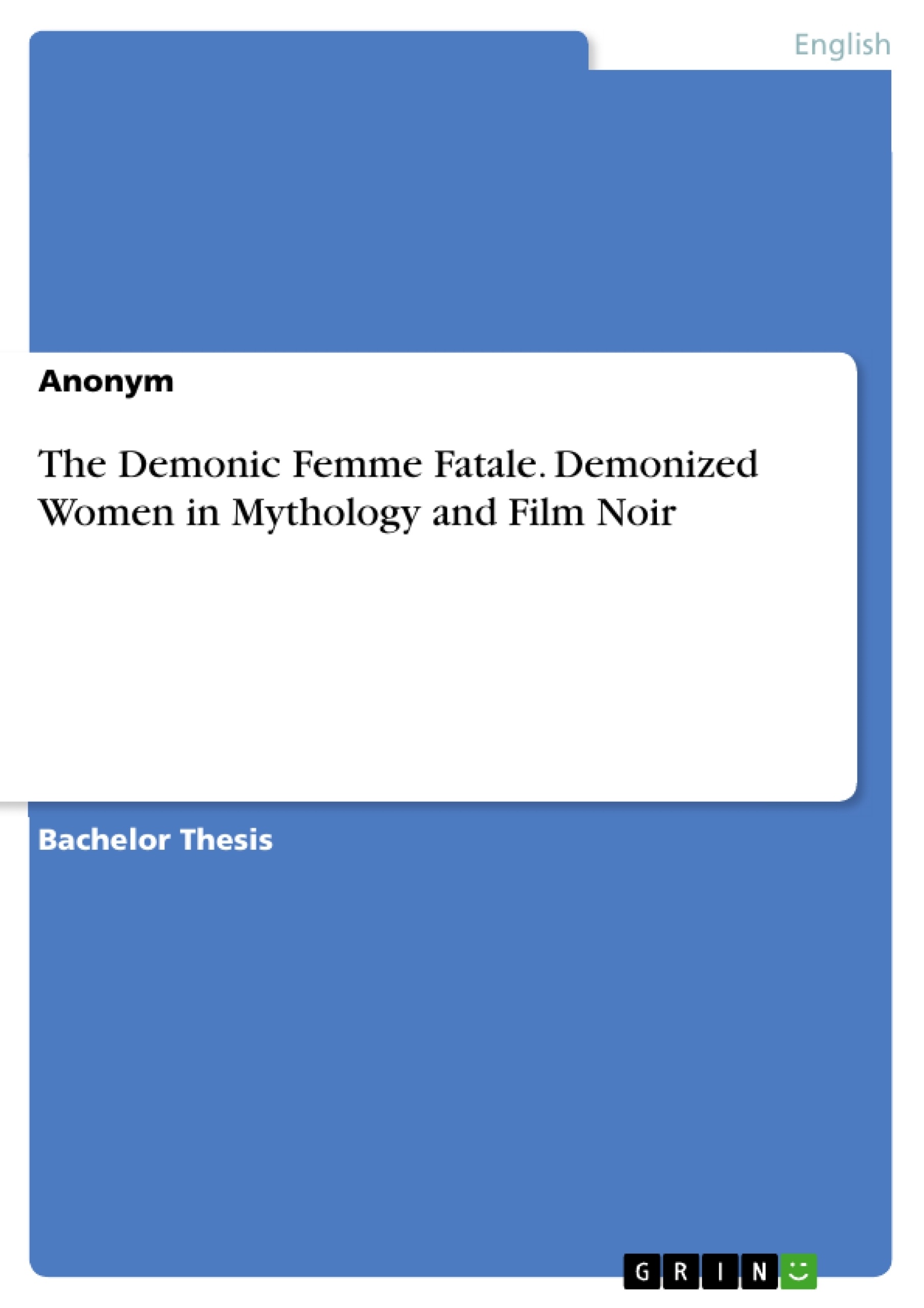This analysis argues that femmes fatales, just like many mythological women, are crucially misunderstood. Although these characters are often demonized in popular narratives, many of them represent victimized women who are demonized for challenging the oppressive environments that they suffer from. Their instrumentalized assets of gender and sexuality are their societal capital which either determines their worth in a man’s world or is the characteristic which they are demonized for.
With the aforementioned examination of the undefinable femme fatale in mind, it will be argued that established cultural conceptions of Eve, Delilah, Salomé, Medusa, and the Sirens produce a demonized image of women which consolidates Film Noir’s trope of the femme fatale. For this analysis, it will be assessed how preconceived convictions that manifest themselves in established interpretations of mythology manipulate the perceptions of the female protagonists in Charles Vidor’s Gilda (1946) and Billy Wilder’s Sunset Boulevard (1950).
Table of Contents
- INTRODUCTION
- THE HISTORY AND ORIGINS OF THE FEMME FATALE
- EVE-ORIGIN OF SIN OR DECEIVED WOMAN
- SALOMÉ - LOYAL DAUGHTER OR SEDUCTIVE DANCER
- DELILAH-DECEITFUL WIFE OR LOYAL PHILISTINE
- MEDUSA - MONSTROUS GORGON OR POWERFUL SURVIVOR
- THE SIRENS - MALICIOUS MAIDENS OR PERSONIFIED DESIRES
- THE FEMMES FATALES OF FILM NOIR
- GILDA (1946)
- The Femme Fatale: Gilda
- 'Put the Blame on Mame' as Self-Introspection
- Queerness and Feminization as Projected Anxiety
- SUNSET BOULEVARD (1950)
- The Femme Fatale: Norma
- Becoming 'the Other' as Projected Anxiety
Objectives and Key Themes
This thesis explores the trope of the demonic femme fatale, investigating its origins in mythology and its manifestation in film noir. The aim is to analyze the character trope in relation to cultural anxieties and societal pressures, particularly focusing on the anxieties of masculinity and the projection of fear onto female characters.
- The origins and development of the femme fatale trope in mythology and film noir
- The role of societal anxieties and fears in shaping the femme fatale archetype
- The impact of the femme fatale on gender roles and societal perceptions of women
- The complex relationship between the femme fatale and masculinity, particularly in film noir
- The potential for reinterpretation and deconstruction of the femme fatale trope, moving beyond its demonization
Chapter Summaries
- Introduction: This chapter introduces the thesis by establishing the concept of the femme fatale as a manifestation of anxieties and projections within a patriarchal society. It connects this trope to historical and societal factors that contribute to its emergence and influence.
- The History and Origins of the Femme Fatale: This chapter traces the origins of the femme fatale archetype through the analysis of prominent female figures in mythology, including Eve, Salomé, Delilah, Medusa, and the Sirens. The chapter explores the way these figures are portrayed as dangerous and seductive, often acting as catalysts for the downfall of male characters.
- The Femmes Fatales of Film Noir: This chapter examines the femme fatale trope in the context of film noir. It analyzes the characters of Gilda in Gilda (1946) and Norma Desmond in Sunset Boulevard (1950), focusing on their portrayal as enigmatic and potentially destructive figures.
Keywords
Key terms and concepts explored in this thesis include femme fatale, mythology, film noir, gender roles, societal anxieties, masculinity, projection, cultural perceptions, deconstruction, reinterpretation, and the role of fear in shaping narrative. These terms provide a framework for understanding the complexity of the femme fatale trope and its enduring significance in popular culture.
- Quote paper
- Anonym (Author), 2023, The Demonic Femme Fatale. Demonized Women in Mythology and Film Noir, Munich, GRIN Verlag, https://www.grin.com/document/1448785




